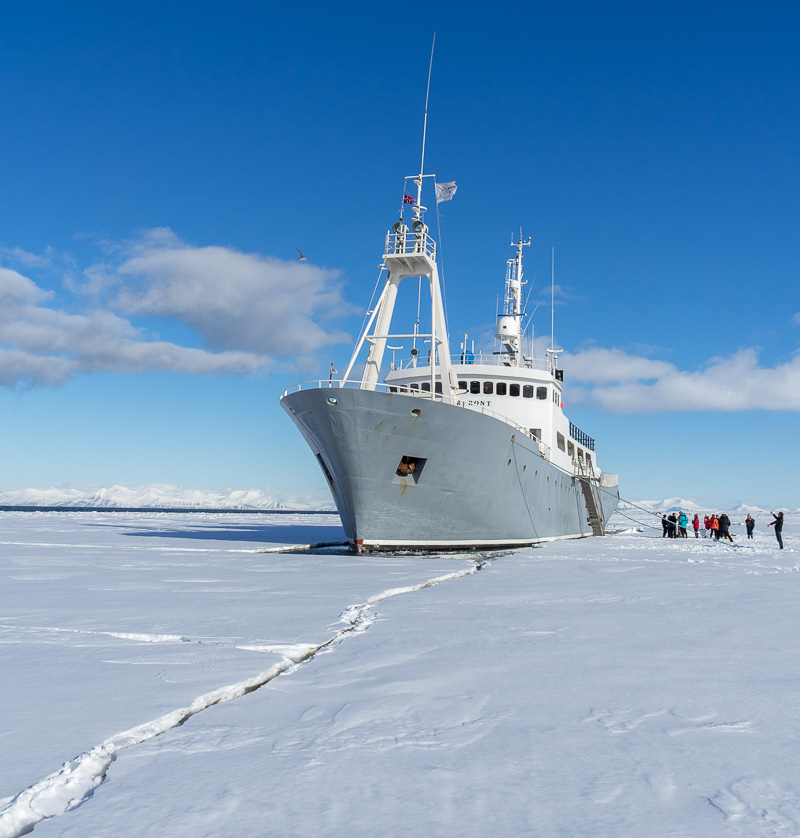
BE PREPARED FOR YOUR EXPEDITION SHIP!
BE PREPARED FOR YOUR EXPEDITION SHIP!
BE PREPARED FOR YOUR EXPEDITION SHIP!
BE PREPARED FOR YOUR EXPEDITION SHIP!
Important points to check
The ship
In English a Ship is a "She". Please remember to call her a "ship" and not a "boat"!
The ship is a very important point. This will be your home away from home for a few days or even weeks. At the same time, this is the tool that brings you to remote places like the polar regions, so you will need to consider two aspects when choosing a ship: what kind of comfort do you want, and how much do you want to be able to benefit from a good outdoor experience? In some rare cases, you can have very good level of service and, at the same time, you can maximize your time outside, but you will need to pay the price! Standards of services are rising everywhere, and you would be surprised to realize that the ships navigating the Arctic and Antarctic are nowadays extremely comfortable!
From my perspective, it is obvious that a small ship will provide a better outdoor experience: it is faster to get on and off of the ship; you are on land with a very small group; it is quieter... As I always say, the smaller the ship, the better the trip! However, if the ship is too small, you are going to roll much more than with a larger one, and I know that no one likes motion sickness... Also, on smaller ships, like sailing boats, it is more difficult to get the same quality of service as on a bigger one, unless the price rises tremendously.
If you prioritize the level of comfort, you might be more comfortable on a bigger vessel with more luxury, but the experience may be less expedition oriented, with less time outdoors. Finally, some vessels are specifically designed to operate in these waters, and the way of operating the vessel determines the amount of time you need to setup an excursion, and in turn, determines what you can achieve with that vessel. Some ships excel at it, and others not really...
The speed, the ice class and the design for operations are the three technical factors that give you the means to achieve tremendous goals (or not!). Small yachts are the most flexible of all, but they sail at roughly 8 knots. Much larger vessels can reach 16 or 17 knots but can't offer you as much flexibility... The ice-class is also extremely important. Please ask your tour operator or travel agent what the ice class is of the vessel you are interested in. The ice-class classification is: 1A Super means "extreme ice conditions, thickness up to 1m thick"; 1A means "difficult ice conditions up to 0,8m thick"; 1B "medium ice conditions up to 0,6m thick"; 1C "light ice conditions up to 0,4m thick" and 1D "very light ice conditions".
Please understand that the stronger the ship's hull is, the better. My advice is to avoid ships with 1D ice class, as you will be away from ice, which is a pity in the polar regions! Of course, the stronger the better. 1C can offer already a very good experience, 1B is stronger and she can find her way through drifting ice belts, 1A is very strong and 1A Super is a beast! Nowadays, some of the newest ships are built with the shape and strength of an icebreaker. The new polar regulations refer to the strength of the hull with a "polar class" classification from PC1 (stronger) to PC7 (weaker).
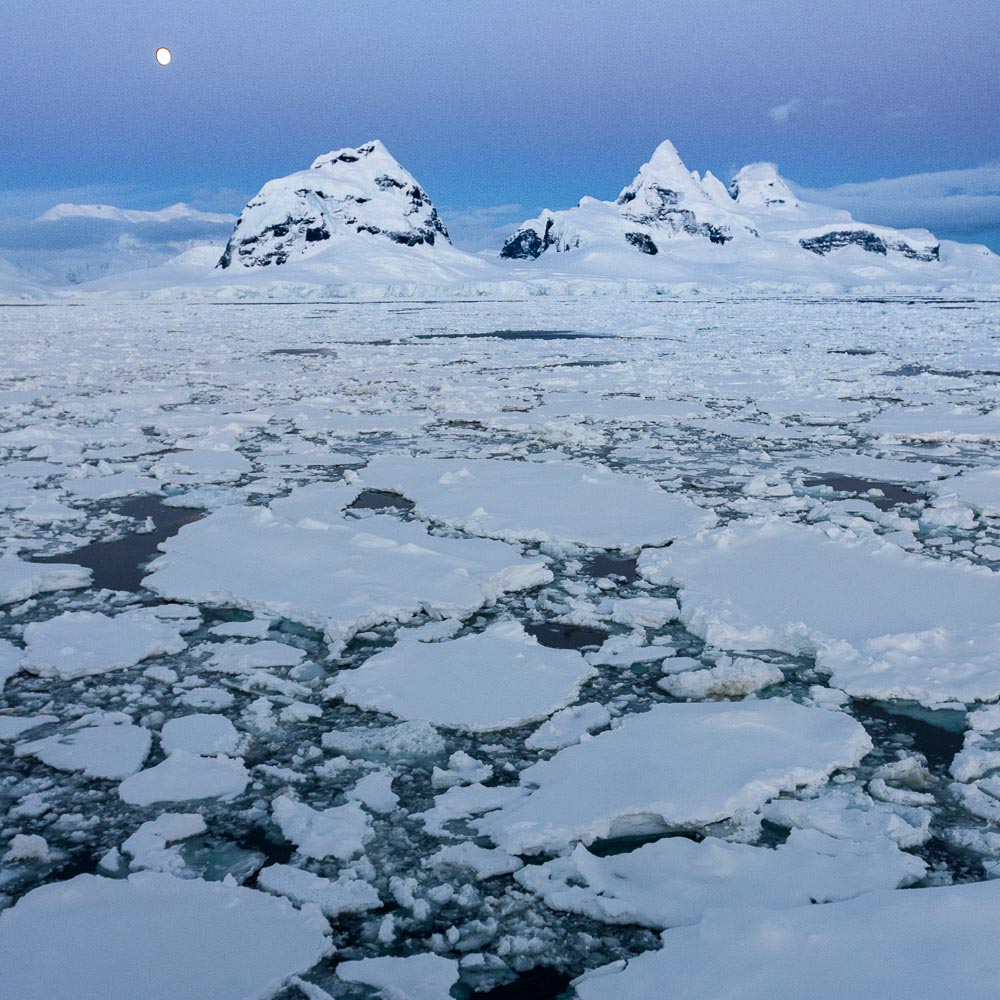 Being surrounded by ice flows is without any doubt an unforgettable moment. Weaker ice-class ships cannot offer this experience.
Being surrounded by ice flows is without any doubt an unforgettable moment. Weaker ice-class ships cannot offer this experience.
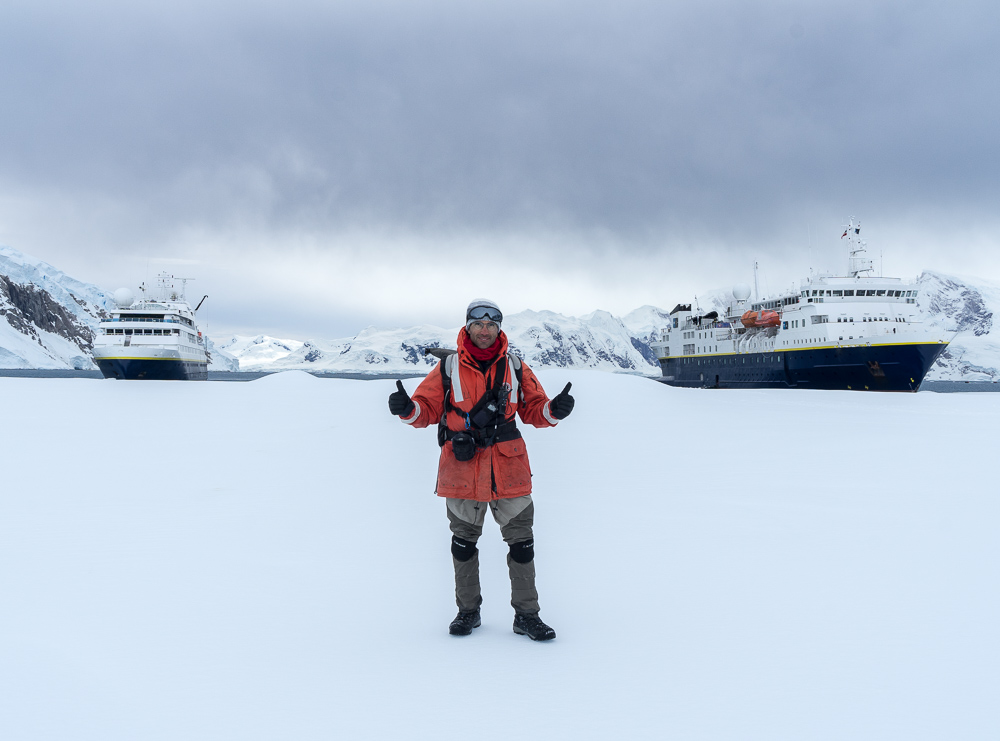 If the sea ice conditions allow, (very often early in the season here around the Antarctic peninsula), when the captain has a ship which is strong enough, he can park the vessel in the sea ice! What a wonderful experience! I remember all of these moments, even after years of experience.
If the sea ice conditions allow, (very often early in the season here around the Antarctic peninsula), when the captain has a ship which is strong enough, he can park the vessel in the sea ice! What a wonderful experience! I remember all of these moments, even after years of experience.
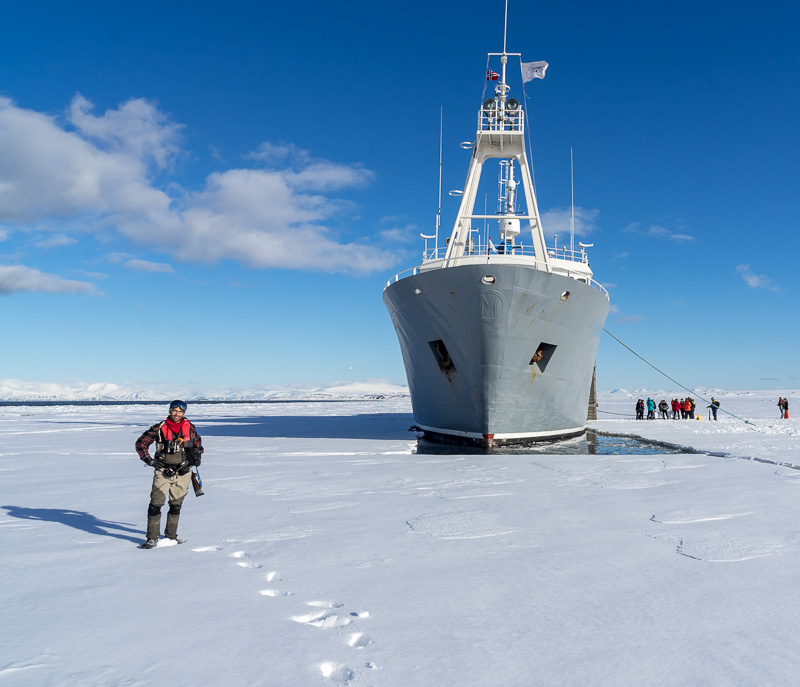 This 14 passengers 1C ice class vessel is strong enough to offer a wonderful sea ice experience at Yoldiabukta (Svalbard).
This 14 passengers 1C ice class vessel is strong enough to offer a wonderful sea ice experience at Yoldiabukta (Svalbard).
The team
This is an important part of the voyage. The role of the so called "Expedition Staff" is to bring you as close to the elements as possible, safely, without disturbing the wildlife, and to educate you. I did not become skilled in one season, as this takes time to achieve. Usually a good team (let's say with around a staff of 10 crew) can afford having one or two newcomers (maximum) for 8 or 9 experienced guides. If among the 10 staff members you have 10 experiences guides: this is an alpha team! As adventure tourism is a growing industry, the quality of the team is very unique from one ship to another, or from one company to another. You may sometimes have half of the team or even a third who are newcomers. They rely on those with more experience then. This is your right to ask your travel agent the name of the staff members, captain, and expedition leader whose role is fundamental as he is the one who plans the route and itinerary on a day by day basis. The duo Captain/Expedition Leader is paramount on such a voyage. If you change one of these two people, the whole trip will be different! Ask who they are and what their experience is for your destination.
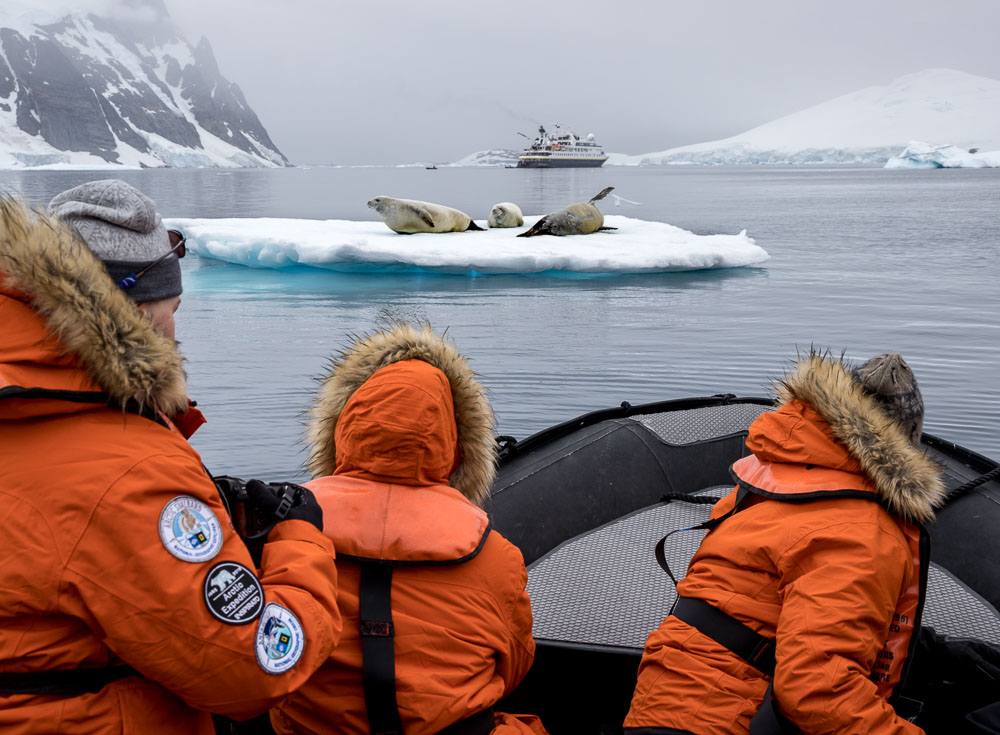 Here I make a slow approach telling to my guests my intentions. I invite them to be comfortable at the bow to take pictures, then I will turn to starboard leaving the seals to my portside. I'll stop and those on starboard will be able to stand, while those on port will remain seated. If some want they can change seats before the approach. I can also turn the boat depending on their wishes and taking into consideration the current. We keep silent and I will approach as close as I can without disturbing them. Then I give some explanations about the crabeater seals, the most abundant in Antarctica. No one knows how many there are... somewhere between 10 and 70 millions of them! Finally, I allow time to answer questions.
Here I make a slow approach telling to my guests my intentions. I invite them to be comfortable at the bow to take pictures, then I will turn to starboard leaving the seals to my portside. I'll stop and those on starboard will be able to stand, while those on port will remain seated. If some want they can change seats before the approach. I can also turn the boat depending on their wishes and taking into consideration the current. We keep silent and I will approach as close as I can without disturbing them. Then I give some explanations about the crabeater seals, the most abundant in Antarctica. No one knows how many there are... somewhere between 10 and 70 millions of them! Finally, I allow time to answer questions.
Charter
It can be an advantage to be on a ship which is sub-chartered by another company. I remember a charter from Belgium where we had some famous characters onboard with strong polar backgrounds. The trip was focused on going to the places visited by a Belgium explorer. This was a very good added value for all the Belgian guests at no extra cost, and the beer and chocolate were delicious!
From another perspective, the worst, in my opinion, is to be on a ship which is half chartered... This means half of the passengers come from one specific travel agency (same language, group, origin, etc...) while the rest of passengers are International. In that case, the vibe aboard is dominated by one predominant culture that can ruin the good atmosphere and the experience of all the other guests. Once again, you have the right to ask your travel agent or tour operator if the voyage you are on is half chartered, or if there are subgroups.
Language
These trips are international. You can ask what the official languages onboard are. English is common, but you might be surprised to hear, once aboard, that everything will be translated into 3 other languages! This is definitely not a pleasant experience to be awoken on the morning with four different announcements, for example: in Russian, Mandarin, German and English. Some companies are targeting one specific region of the globe; therefore, some ships offer one language only like: French, German or Mandarin. I like when there is a good mix of people from all over the world, with 15 to 20 different nationalities onboard and when there is only one official language for everybody: English. This makes things easier for everybody and this is also more pleasant for the passengers.
Your health
Please be healthy before your departure. I do not recommend these kinds of trips if you cannot hike properly or do not have good balance. If you take medications, take enough with you, not only for the duration of the trip, but take extras in case of an emergency situation.
Insurance
This is the trip of a lifetime. So please purchase insurance that covers all aspects of your voyage. You can always subscribe to the insurance recommended by the tour operator or travel agency. Remember that repatriation can be very costly in this kind of situation.
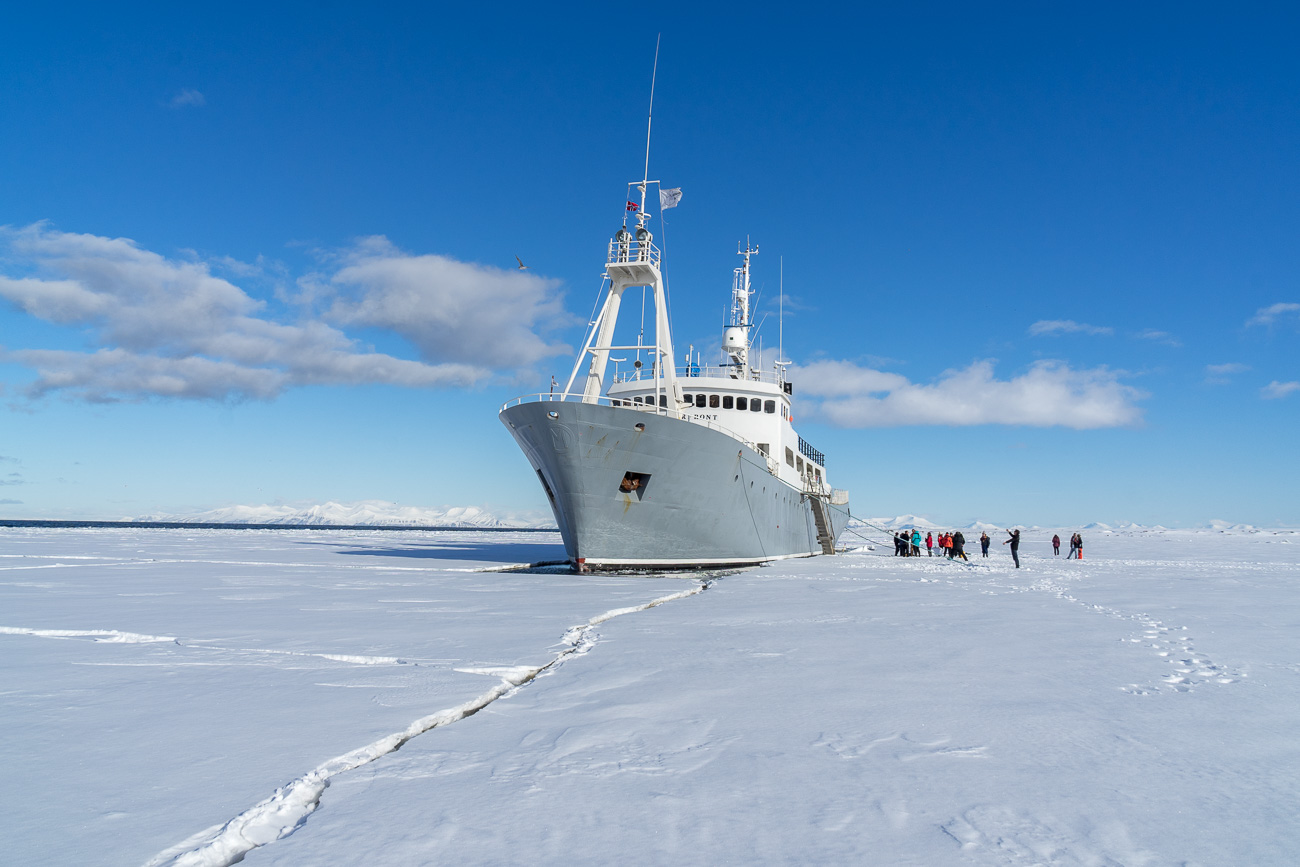
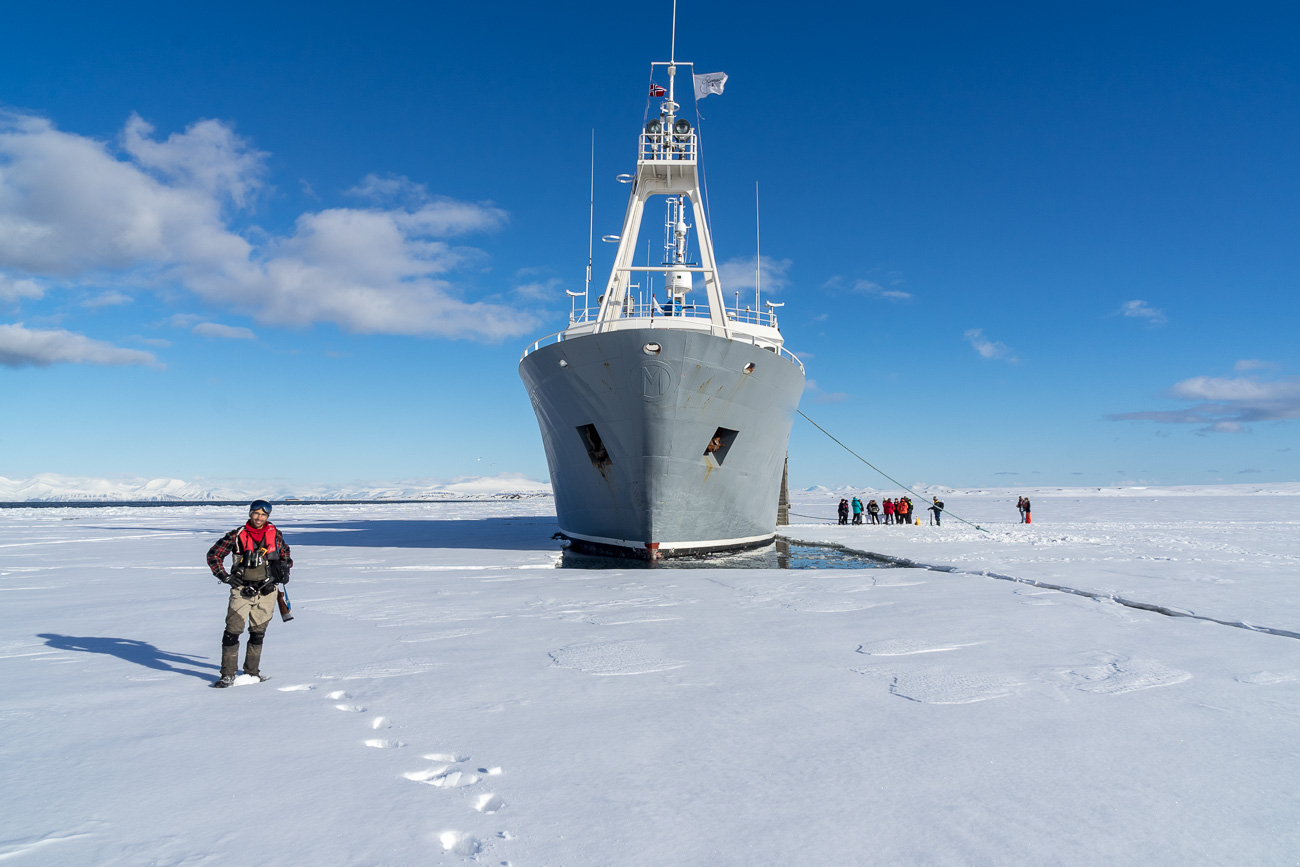 This 14 passengers 1C ice class vessel is strong enough to offer a wonderful sea ice experience at Yoldiabukta (Svalbard).
This 14 passengers 1C ice class vessel is strong enough to offer a wonderful sea ice experience at Yoldiabukta (Svalbard).